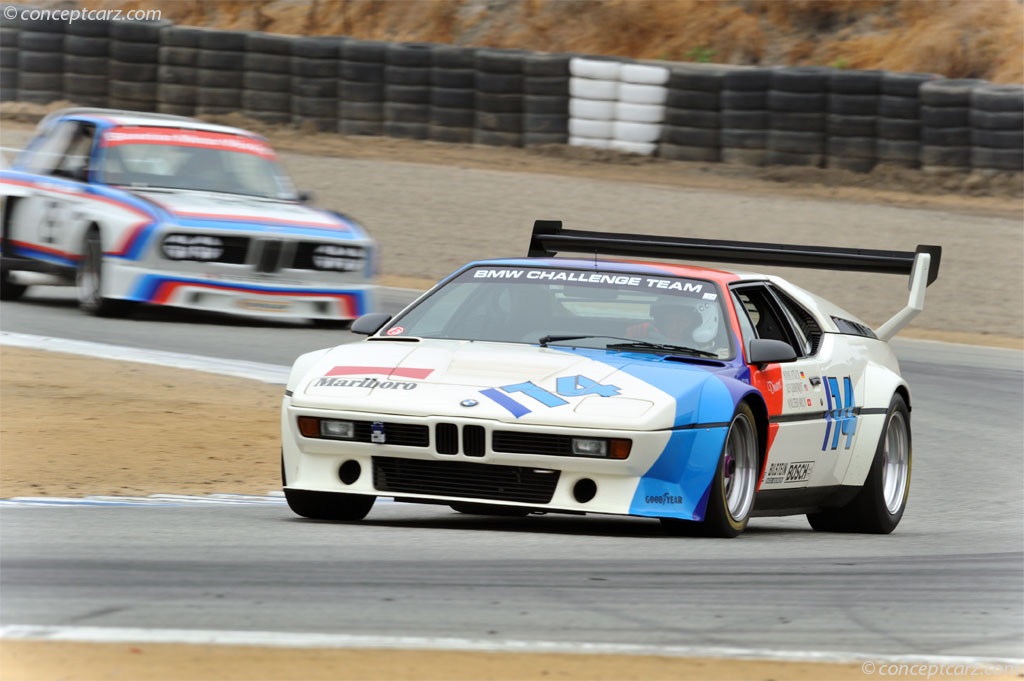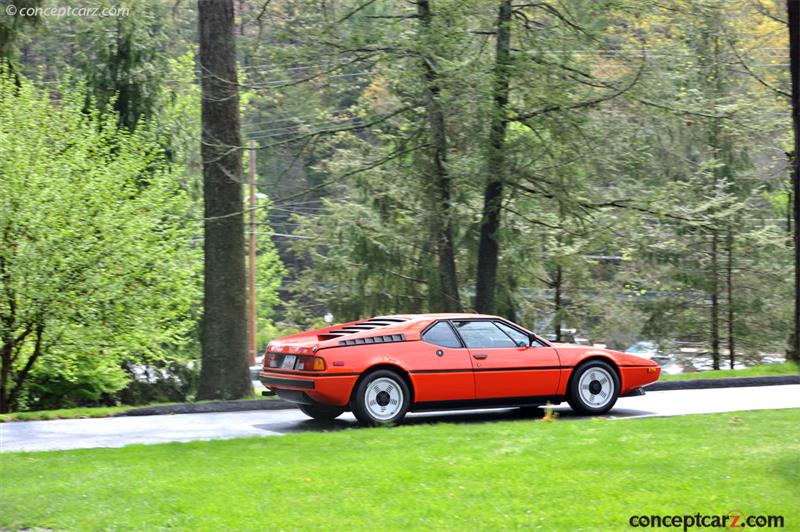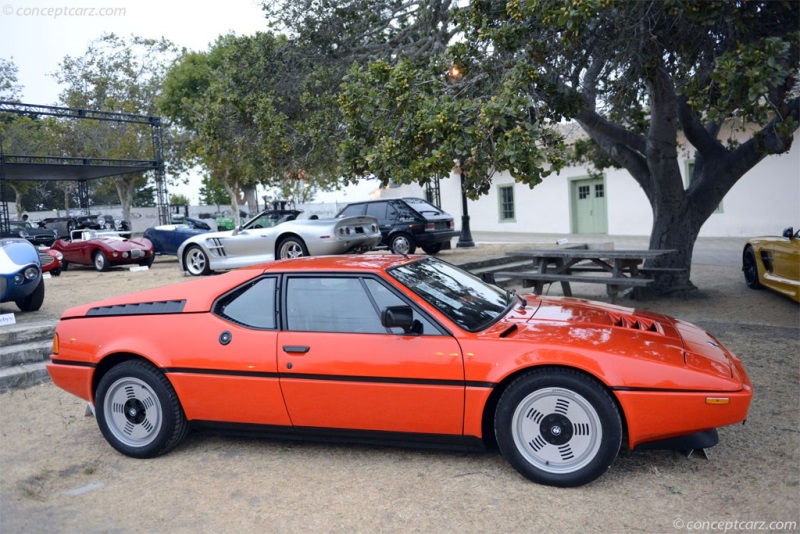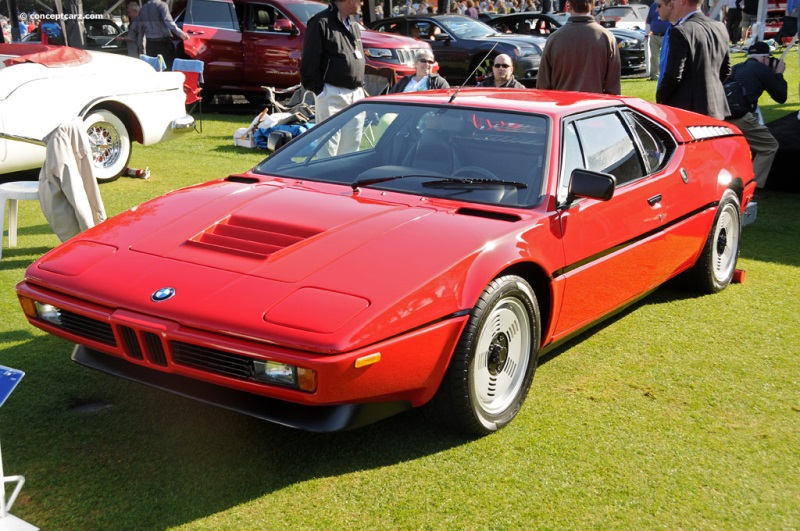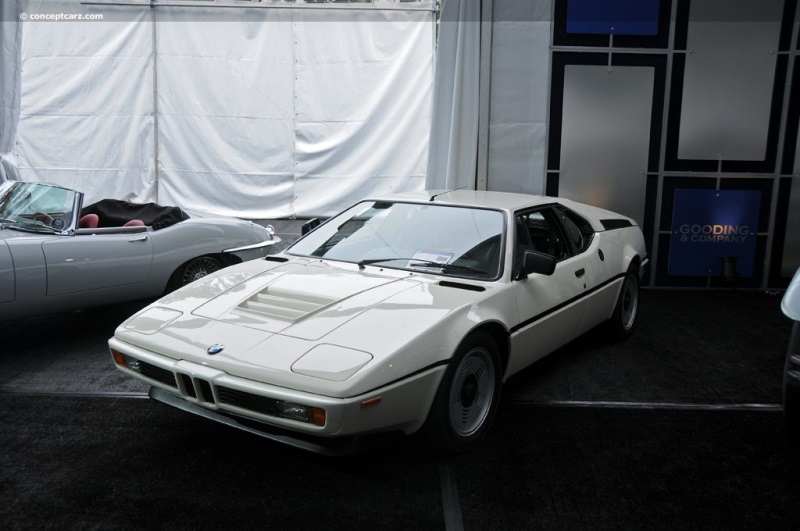1981 BMW M1 Navigation
The aesthetic lines of the wedge-shaped body and the mid-engine placement were a bold and audacious concept to emerge from a company with modest resources. Internally designated as the E26, BMW introduced its M1 sports car in 1978 at the Paris Auto Salon to serve as a replacement for the 3.0 CSL coupe that had been competing in the European Touring Car Championship. Jochen Neerpasch, head of the motorsport division of BMW, was in need of a Group 5 contender that could rival Porsche, and the M1 filled that criteria. Rules stipulated that 400 road-going examples were to be built to satisfy homologation and since the task was too daunting and would interfere with the company's core business of building passenger cars, BMW partnered with Lamborghini. Lamborghini was tasked with engineering a chassis and ItalDesign was commissioned to craft the bodywork. Financial distress soon had Lamborghini dropping out of the project and due to the delay, the M1 was not officially homologated until the spring of 1981, too late to compete in Group 4. Several prototypes had been built before BMW reassumed control over the project in April 1978. Production delays and changes in Group 5 regulations resulted in the M1 competing in Group 4 competition. 
Coupe
Chassis #: WBS59910004301348
Engine #: M88-389
View info and history
Auction entries : 1Mechanical Specification and Design
The tube-frame chassis layout of the M1 was designed by Gian Paolo Dallara, whose resume would include designing the Miura and Countach. ItalDesign's Giorgetto Giugiaro wedge-shaped bodywork was athletic and modern, and chassis construction was handled by Italian firm Marchese, while fiberglass specialist T.I.R. was contracted to mold the GRP body panels. Prior to shipping the car to Baur in Germany for installation of the BMW drivetrain, ItalDesign installed the interior. Final prep was conducted at BMW M's facility in Munich.The BMW M1 had ventilated steel brakes by ATE sport measuring 11.8 inches at the front and 11.7-inches at the rear. ABS was not made available. The 7x16-inch front and 8x16-inch Campagnolo alloy wheels were wrapped with Pirelli P7 tires with the fronts measuring 205/55 VR15 and the rears at 225/50 VR15. The steering was by an unassisted rack and pinion unit with 3.2 turns lock-to-lock. The suspension was via double wishbones with MacPherson struts, adjustable coil springs, height-adjustable Bilstein gas-filled dampers, double unequal-length control arms, and a 23mm anti-roll bar in front and 19mm bar in the back. The cars built for the road had a softer setup for better ride quality.Engine Specification
Mounted mid-ship was a 3,453cc (3.5-liter) engine developed by Paul Rosche. The road-going guise, the M88/1 petrol six-cylinder unit had Kugelfischer-Bosch mechanical fuel injection, Magneti-Marelli ignition system, six separate throttle bodies, twin-cams, 4 valves per cylinder, and produced 273 horsepower (277 PS) at 6,500 RPM and 243 lb-ft (330 Nm) of torque at 5,000 RPM. It was paired with a five-speed manual transmission made by ZF Friedrichshafen equipped with a 4.22:1 limited-slip differential with 40-percent locking.
Coupe
Chassis #: WBS599100004301021This 3.5-liter engine could also be found in the 6 Series and 7 Series. The road-going M1 cars had over 270 horsepower, the Group 4 cars produced 470 bhp, and the cars destined for Group 5 produced 850 bhp with the help of a turbocharger. The four-valve cylinder head was sourced from the later 3.0 CLS race engines and was made of two parts, combustion and coolant chambers below and camshaft bearings and cup tappets above. 46mm throttle bodies were fitted to each cylinder. The engine oiling was through a dry-sump system. Interior
The interior of the BMW M1 was largely unique except for some minor switchgear sourced from the 3 Series and 7 Series. Most of the cars had a black-and-gray cockpit color scheme except for nine cars which had dark beige cloth and leather upholstery. ASS provided the M1-specific seats which were bolstered in cloth and leather inserts. The dashboard was also covered in leather, while textured cloth covered the door panels and headliner. The three-spoke leather-covered steering wheel had a BMW Motorsport logo in the middle, and standard equipment included power windows and mirrors, a Becker radio/cassette system, and air conditioning. The seats were unadjustable and only a left-hand-drive configuration was offered.Performance
The BMW M1 was capable of sprinting from zero-to-sixty mph in 5.4 seconds and 100 mph was reached in 8.0 seconds. Production
The first M1 was finished in January of 1978 and production ended in December of 1980 and there were no changes made to the car throughout its run. Approximately 431 examples were built (as many as 453) with 399 built for public roads while the others were destined for the track. No factory options were offered, though various accessories were made available, including fitted luggage, mud flaps, and a kit to lower the seats for taller drivers. The list of exterior colors included black, white, grey, red, orange, silver metallic, and dark blue. Motorsports
The production lifespan of the BMW M1 was brief and its motorsport accomplishments were few due to rule changes and the company's poor financial situation which prevents any further development.
Coupe
Chassis #: WBS599100004301021Jochen Neerpasch devised a one-make championship, known as the 'Procar BMW M1 Championship,' in 1979 using competition M1s and served as a support series for Formula One. This series was intended to aid BMW in producing enough cars to enter the group 4 classification in the World Championship for Makes. Niki Lauda won the 1979 season and Nelson Piquet the 1980 season. When BMW satisfied the requirements for Group 4, the Procars were raced by various teams in the world championship as well as other national series. From 1981 to 1986, the BMW M1 raced at the 24 Hours of Le Mans in the Group B classification. A single M1 Pro Car was also converted to Group B rally spec by BMW France for the 1982 season and 1983 seasons. The Motul privateer racing team raced it in the 1984 season. During 1984, Bernard Béguin won back-to-back at Rallye de La Baule and Rallye de Lorraine that season and even claimed an outright ERC podium at Rally d'Antibes four months later.While the BMW M1 never fulfilled its production mandate of being a disruptive force in Group 4 and 5 competition, it did gain publicity racing as a support series for Formula One and its appearances at LeMans. The 1979 entry even wore bodywork painted by pop artist Andy Warhol and finished 6th overall and second in class.As a road-going vehicle, the M1 had performance times comparable to, or better than, the day's fastest Ferraris and Porsches. It remains the only true mid-engine exotic supercar in the company's storied history.
by Daniel Vaughan | Oct 2022
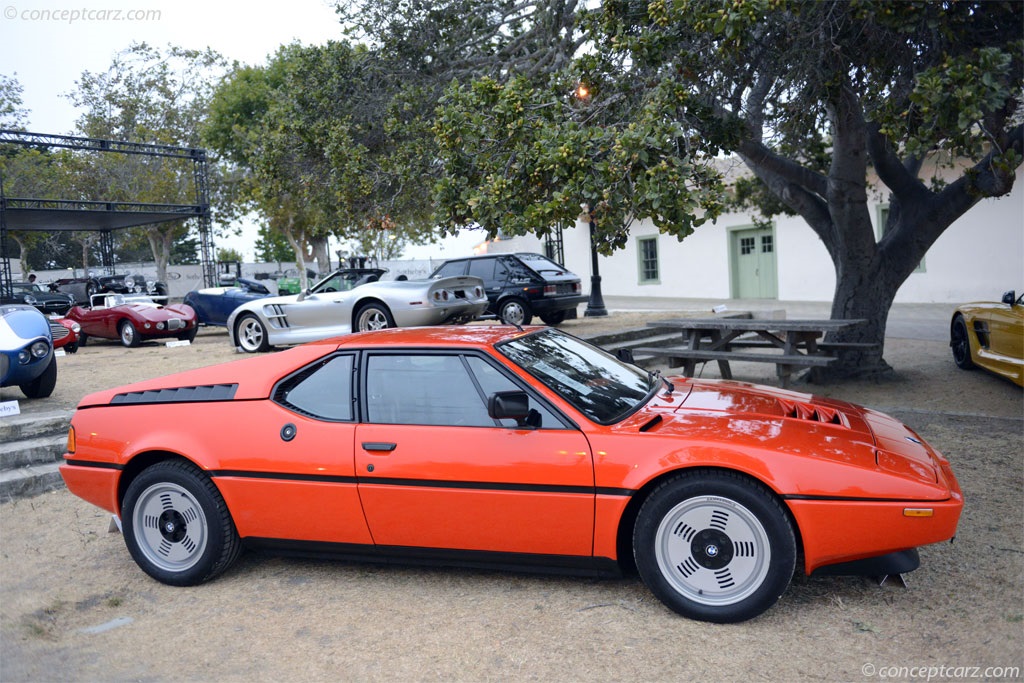
Coupe
Chassis #: WBS59910004301348
Engine #: M88-389
View info and history
Auction entries : 1
The tube-frame chassis layout of the M1 was designed by Gian Paolo Dallara, whose resume would include designing the Miura and Countach. ItalDesign's Giorgetto Giugiaro wedge-shaped bodywork was athletic and modern, and chassis construction was handled by Italian firm Marchese, while fiberglass specialist T.I.R. was contracted to mold the GRP body panels. Prior to shipping the car to Baur in Germany for installation of the BMW drivetrain, ItalDesign installed the interior. Final prep was conducted at BMW M's facility in Munich.The BMW M1 had ventilated steel brakes by ATE sport measuring 11.8 inches at the front and 11.7-inches at the rear. ABS was not made available. The 7x16-inch front and 8x16-inch Campagnolo alloy wheels were wrapped with Pirelli P7 tires with the fronts measuring 205/55 VR15 and the rears at 225/50 VR15. The steering was by an unassisted rack and pinion unit with 3.2 turns lock-to-lock. The suspension was via double wishbones with MacPherson struts, adjustable coil springs, height-adjustable Bilstein gas-filled dampers, double unequal-length control arms, and a 23mm anti-roll bar in front and 19mm bar in the back. The cars built for the road had a softer setup for better ride quality.Engine Specification
Mounted mid-ship was a 3,453cc (3.5-liter) engine developed by Paul Rosche. The road-going guise, the M88/1 petrol six-cylinder unit had Kugelfischer-Bosch mechanical fuel injection, Magneti-Marelli ignition system, six separate throttle bodies, twin-cams, 4 valves per cylinder, and produced 273 horsepower (277 PS) at 6,500 RPM and 243 lb-ft (330 Nm) of torque at 5,000 RPM. It was paired with a five-speed manual transmission made by ZF Friedrichshafen equipped with a 4.22:1 limited-slip differential with 40-percent locking.

Coupe
Chassis #: WBS599100004301021
The interior of the BMW M1 was largely unique except for some minor switchgear sourced from the 3 Series and 7 Series. Most of the cars had a black-and-gray cockpit color scheme except for nine cars which had dark beige cloth and leather upholstery. ASS provided the M1-specific seats which were bolstered in cloth and leather inserts. The dashboard was also covered in leather, while textured cloth covered the door panels and headliner. The three-spoke leather-covered steering wheel had a BMW Motorsport logo in the middle, and standard equipment included power windows and mirrors, a Becker radio/cassette system, and air conditioning. The seats were unadjustable and only a left-hand-drive configuration was offered.Performance
The BMW M1 was capable of sprinting from zero-to-sixty mph in 5.4 seconds and 100 mph was reached in 8.0 seconds. Production
The first M1 was finished in January of 1978 and production ended in December of 1980 and there were no changes made to the car throughout its run. Approximately 431 examples were built (as many as 453) with 399 built for public roads while the others were destined for the track. No factory options were offered, though various accessories were made available, including fitted luggage, mud flaps, and a kit to lower the seats for taller drivers. The list of exterior colors included black, white, grey, red, orange, silver metallic, and dark blue. Motorsports
The production lifespan of the BMW M1 was brief and its motorsport accomplishments were few due to rule changes and the company's poor financial situation which prevents any further development.
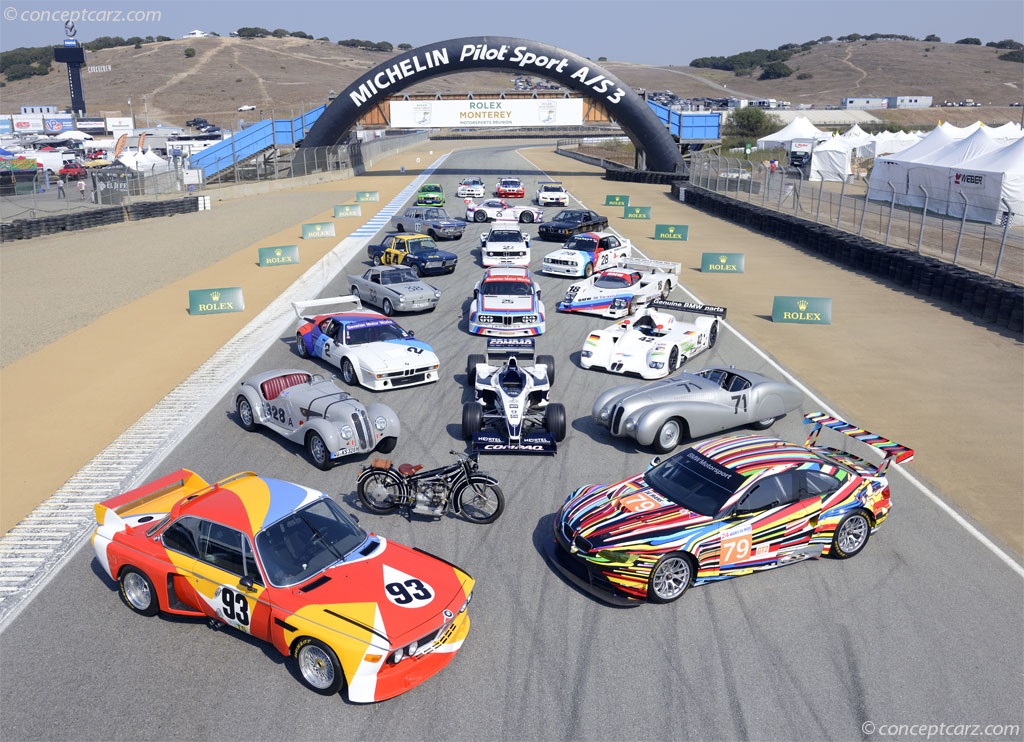
Coupe
Chassis #: WBS599100004301021
by Daniel Vaughan | Oct 2022
Related Reading : BMW M1 History
The M1 was a radical departure from the front-engined, rear-wheel-drive configuration of its prior vehicles. It also had to compete with the legacy of the vehicle it was replacing, the highly successful 3.0 CSL. The M1, also known as the Mid-Engined BMW M1 Project E26, was started in 1976 and completed four years later. The development of the M1 supercar was very costly its design and development....
Continue Reading >>
Continue Reading >>
Related Reading : BMW M1 History
As racing regulations evolved in the mid-seventies, BMW Motorsport saw an opportunity to beat arch-rival Porsche in a new series by designing and manufacturing a purpose-built car and offering it for sale to the public, as stipulated by the rules. The BMW M1, designed by Giugiaro and powered by a Paul Rosche designed 3.5-liter, twin-cam six-cylinder engine mounted mid-ship, debuted at the 1978 Paris....
Continue Reading >>
Continue Reading >>
- 1981 BMW M1 Menu
- Article
- Image gallery
- Valuation
- Specifications
- Profiles
BMW
Similar Automakers
Similarly Sized Vehicles
from 1981
1981 BMW M1 Vehicle Profiles
Recent Vehicle Additions
Performance and Specification Comparison
M1 Specification Comparison by Year
Year
Production
Wheelbase
Engine
Prices
Related Automotive News

BMW At Monterey Car Week 2018
Woodcliff Lake, NJ – August 20, 2018… In the lead up to the 2018 Monterey Car Week celebration, BMW announces its planned highlights. After premiering the BMW Concept 8 Series Coupe and the BMW Concept Z4 Roadster on the Reviewing Stand at the...

BMWUSA CLASSIC TO RUN SEVEN CLASSIC RACE CARS IN CENTENARY CELEBRATION AT THE ROLEX MONTEREY MOTORSPORTS REUNION 2016
Woodcliff Lake, N.J. – August 9, 2016…BMW USA Classic will run seven historic race cars at the 2016 Rolex Monterey Motorsports Reunion on August 18-21 in Monterey, California. BMW is the featured marquee at the Rolex Reunion and the brand will...

THE McLAREN F1
FOR THE DRIVER VITALLY – AS IN ONE OF McLARENS WORLD CHAMPION RACING CARS – DRIVER AND VEHICLE BECOME ENTIRELY AS ONE
The primary design consideration for the McLaren F1 has been to make it without reserve a drivers car, an extremely high-performance...

BMW CELEBRATES ITS PAST, PRESENT AND FUTURE DURING PEBBLE BEACH CONCOURS AND ROLEX MONTEREY MOTORSPORTS REUNION WEEKEND
Never before seen concept from BMW M GmbH debuts at The Quail A Motorsports Gathering
BMW Pininfarina Gran Lusso Coupé makes North American debut at Pebble Beach Concours dElegance
New BMW 428i Coupe to be display and offered as raffle prize at...

BMW TO BE FEATURED AT SARATOGA AUTOMOTIVE MUSEUM
BMW History and Heritage on four wheels and two on display from May – November, 2013
Woodcliff Lake, NJ – March 8, 2013… BMWs rich heritage will be showcased at the Saratoga Automobile Museum in an exhibition called BMW – The Ultimat...
